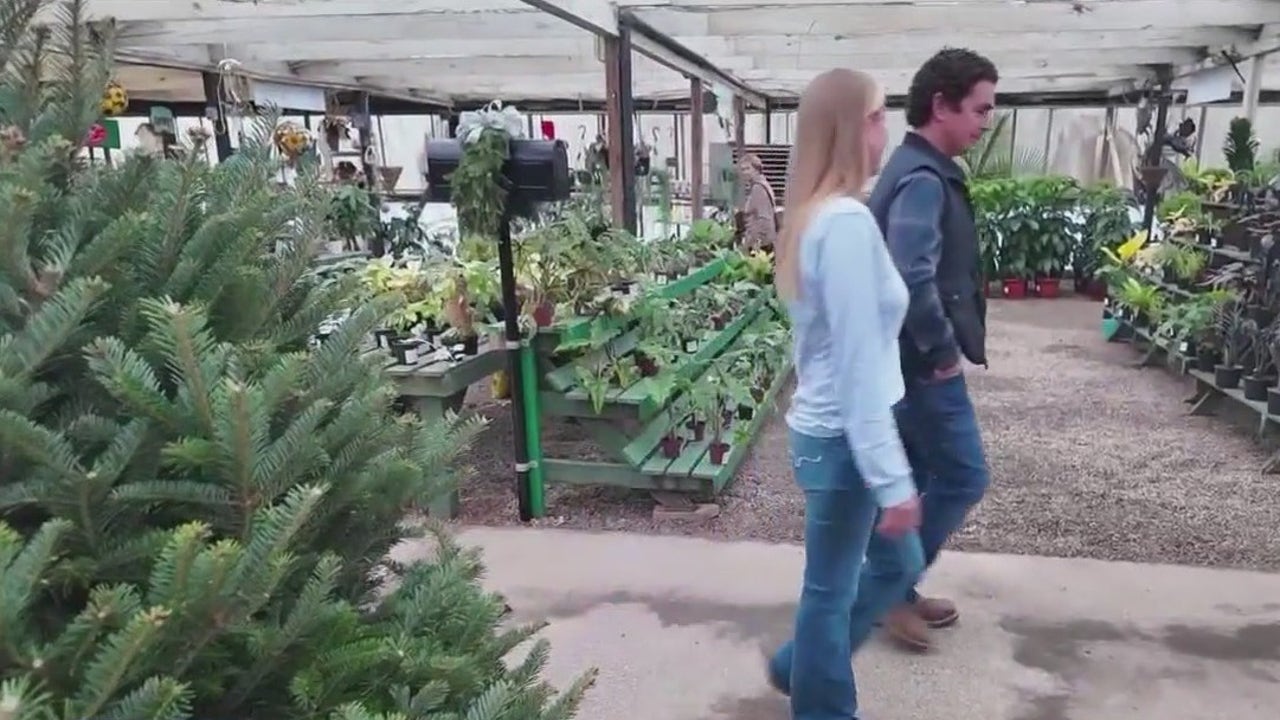North Carolina
Teachers continue to spend own money on supplies as state funding half of what it once was

In the weeks leading up to the first school bell, the ‘Tools4Schools’ store is filled with teachers.
Excited chatter fills the free classroom supply store as Wake County educators stock up on needed supplies.
“This right here is probably over 50 bucks that I would be spending in this store,” said Kindergarten teacher Carla Matthews as she pointed to her basket full of organizational supplies.
It’s estimated that teachers spend $500 out-of-pocket on classroom supplies a year.
Matthews said that the estimate was accurate for her. She said without spending her own money she wouldn’t feel prepared.
“It just gives you more confidence in the classroom. I want to do things a certain way. As far as procedure and so forth. It just makes it easier when you have the things you need,” she said.
Keith Poston is the president of the WakeEd Partnership; the nonprofit that runs ‘Tools4 Schools.’ He said based on surveys they’ve done, Wake County teachers spend closer to $900 a year on supplies.
“So you’re taking that out of your own family’s money to put into your classroom. That’s what teachers do,” Poston said. “We thought this would be an opportunity so that our teachers who don’t make enough anyway would have to also go out and buy stuff for their classroom,”
Since ‘Tools4Schools’ opened in January 2022, the store has grown to provide more than 4,000 teachers with $340,000 worth of materials.
“It just always just kind of blew my mind that they had to go out and buy all their basic supplies out of their own pockets for the classroom. Shouldn’t the state provide that? Well, yeah, they should provide that, but they don’t they don’t provide enough,” Poston said.
North Carolina allocated $47 million for classroom supplies and materials last year; an amount that equates to around $30 per student. This funding has increased by $1.6 per student in the last ten years.
“It only works out to be like a couple of hundred bucks per teacher. And again, they need a lot more than that,” Poston said.
The I-Team found the state funds for classroom supplies are pretty evenly distributed between public school districts with districts receiving between $33-$30 per student.
Back in 2008-09 the state provided doubled the amount of funding for classroom supplies. The state budget from 2008-09 allocated $87.4 million for supplies or nearly $60 per student.
In addition to state funding, federal and local dollars also contribute. Last year, Wake County allocated $55 million for school and office supplies. This is around $115 more per student than a decade ago. Most of that increase stems from an uptick in federal funding.
Durham County Public Schools don’t break down their supply funding by ‘school and office supplies.’ The district allocated $49.7 million for supplies and materials last year or $1,600 per student. That total includes everything from textbooks to custodial supplies to fuel to tires. DPS’s budget for all supplies and materials has increased by $278 per student.
While money does exist, education advocates say more is needed, especially since not all districts can allocate as much as others.
“We have some schools that have their own private foundations. They get more money than they can possibly spend. And then we have other schools that don’t get anything. And so it really is we’re trying to fill the gap for the schools and the students and the teachers that need us the most,” Poston said.
Even when funding exists, teachers are often not receiving a stipend for supplies that are needed but aren’t supplied. This makes nonprofits and other organizations that are able to assist families and teachers that much more needed.
‘Tools4Schools’ plans to be opened throughout the school year and accepts donations from the community.
More Back-to-School stories on ABC11
Road rules to get students to school and home safely

North Carolina
North Carolina man gets maximum sentence for 2021 murder

JEFFERSONVILLE, Ind. (WAVE) – A North Carolina man found guilty of killing a Wisconsin man in Jeffersonville will likely spend the rest of his life behind bars.
Christopher Tandy was sentenced to 65 years for the 2021 shooting death of Rodrick Wallace. Police found Wallace’s body on the side of Edgewood Way in the Oak Park subdivision on July 23, 2021.
Tandy was arrested in North Carolina days later. The court found him guilty and the judge gave him the maximum sentence allowed in Indiana.
“I’m very pleased with the court’s decision today,” Clark County Deputy Prosecutor Calvin Blank said. “I believe it was appropriate in this instance. The crime of murder is highest in which we have in Indiana and we were able to prove that the defendant did it and he received the sentence that is appropriate under Indiana law.”
Tandy was given 55 years for murder and auto theft and another 10 years for being a felon with a firearm.
Copyright 2024 WAVE. All rights reserved.
North Carolina
A power grab by Republicans in North Carolina becomes a referendum on democracy in the states
RALEIGH, N.C. (AP) — Democrats in North Carolina were celebrating big wins in the swing state after the November election, including victories in races for governor and other top statewide offices. But the political high didn’t last long.
Republican lawmakers are stripping away some core powers of the newly elected officials through a series of wide-ranging changes, anticipating that the result of a yet-to-be-called state legislative race will cost them their veto-proof majority next year. Critics say the moves, which were rushed through without any chance for public comment or analysis, undermine the voters and are simply undemocratic, but they have few options for undoing them.
“Let us speak plainly: This bill is nothing more than a desperate power grab,” said Courtney Patterson, vice president of the NAACP’s North Carolina chapter.
Among the changes, which were included in a bill that also addressed Hurricane Helene relief, are stripping the incoming governor of the authority to appoint members to the state elections board and instead giving that responsibility to the state auditor — a job won by a Republican last month. The measure also weakens the ability of the governor to fill vacancies on the state court of appeals and the state supreme court. It prohibits the attorney general from taking legal positions contrary to the legislature’s and weakens the powers of the state school superintendent and lieutenant governor.
Democratic Gov. Roy Cooper and Attorney General Josh Stein, who will succeed Cooper next month, have already filed a lawsuit against Republican lawmakers, saying many portions of Senate Bill 382 violate the state constitution. The Republicans’ actions in North Carolina are the latest example of how majority parties in some states have tried to undermine representative democracy in recent years, using extreme gerrymandering to expand their hold on power or trying to undercut officeholders of the opposing party or ballot initiatives that passed in statewide elections.
“This is not how healthy democracies work,” said Steven Greene, a political science professor at North Carolina State University. “You don’t lose and decide you’re going to change the rules because you don’t like that you lost. It’s corrosive of the basic principles of democracy.”
Greene said he was disappointed but not surprised by the effort he describes as part of a familiar playbook. In 2016, hundreds of people protested and more than two dozen were arrested after Republicans passed a bill that stripped powers from Cooper’s incoming administration during a special session.
Republicans point out that Democrats acted to weaken executive branch positions after voters elected the state’s first GOP governor in the 20th century, in 1972, and the century’s only GOP lieutenant governor in 1988. North Carolina Senate leader Phil Berger blamed Democrats’ “blatant partisanship” for necessitating the changes, which came just weeks after voters chose Democrats for the top statewide positions.
“The new measures in Senate Bill 382 actually balance our three branches of state government so that North Carolina remains on a positive trajectory, free from Democratic Party and liberal activist obstruction,” he said in a statement earlier this month.
While Democrats have won many top statewide offices for several election cycles, Republicans maintain a tight grip on the other two branches of government in North Carolina. Republicans have control of the legislature and hold at least a 5-2 majority on the state Supreme Court, where any dispute over the power-stripping legislation could ultimately land.
Since winning control of North Carolina’s legislature in the 2010 elections, Republican lawmakers have repeatedly drawn voting districts to their favor, just as Democrats had done when they were in charge. That has helped Republicans retain a firm hold on power in the legislature while also triggering protracted court battles over redistricting.
The current legislative districts are advantageous to Republicans. The GOP won about nine more state House seats this year than would have been expected based on their average share of the district votes, according to an Associated Press analysis using a mathematical formula designed to detect gerrymandering.
“North Carolina is very much a purple state,” said Melissa Price Kromm, executive director of North Carolina for the People Action. “… But our legislature has been gerrymandered to allow for a Republican supermajority that makes these nefarious attacks on our democracy possible. It’s baked into the system.”
Meanwhile, an extremely tight race for a state Supreme Court seat has sparked a legal battle over the potential removal of tens of thousands of ballots. With the incumbent Democratic justice clinging to a narrow lead, the Republican candidate’s challenge includes objecting to ballots from voters whose registration lacks driver’s license or Social Security numbers. His attorneys argue that makes them incomplete.
“North Carolina voters see that the same folks who are trying to overturn the results of the state supreme court race are the same people who are trying to change the way our elections are handled, the way powers and government functions are handled,” said Julia Hawes, communications director at the statewide advocacy group Democracy North Carolina. “A lot of us have been watching these power grabs and attempts to overturn the will of the people for over a decade.”
In several other states, lawmakers also have made attempts to nullify some results of the November election. In Missouri, Republicans are taking initial steps to curtail voter-approved abortion protections by introducing a new constitutional amendment to restrict abortion access. Massachusetts Democrats are exploring options to alter the auditing process after voters overwhelmingly approved giving the state auditor the authority to watchdog the Legislature.
During last week’s veto override in the North Carolina House, over 100 demonstrators chanted “Shame” and “People power” as they were escorted out of the chamber’s gallery. Two days before, hundreds marched to the Legislative Building to deliver documents opposing the bill.
Rep. Cynthia Ball, a Democrat and member of the election law committee, criticized Republicans for not making the bill public earlier, not offering a public comment period and tucking such a significant power shift into legislation that included storm relief.
“Our democracy is threatened more and more when things are done behind closed doors,” she said.
Della Hann, 64, traveled the 2 1/2 hours to Raleigh from her home in Southport to demonstrate when the Senate agreed to override Cooper’s veto of what she called “a horrible bill.”
The legislation, she said, is “not for the people of the state. It’s for the people sitting in that room to keep their power.”
Kromm, of North Carolina for the People Action, said watching crowds gather in protest offered hope and said her group would be focused on educating voters so they can hold lawmakers accountable.
“The sheer number of people who turned up showed that people in North Carolina care about what’s happening in our legislature, and they don’t give up without a fight,” she said. “They know authoritarianism thrives on complacency and that we must stand together and refuse to let this assault on democracy go unanswered.”
___
Fernando reported from Chicago. Associated Press writers Makiya Seminera in Raleigh, North Carolina, and David A. Lieb in Jefferson City, Missouri, contributed to this report.
___
The Associated Press receives support from several private foundations to enhance its explanatory coverage of elections and democracy. See more about AP’s democracy initiative here. The AP is solely responsible for all content.
North Carolina
Local charity says its in 'crisis mode' as NC struggles with donations during holiday season

In the season of giving, charities and organizations in North Carolina are struggling with holiday donations.
With Christmas just one week away, many charities are feeling the pinch.
Less than a week ago, the Triangle Nonprofit and Volunteer Leadership Center said it lost an important sponsor, which they said could affect more than 50 families that rely on the center.
Kim Shaw of the Triangle Nonprofit and Volunteer Leadership Center said the center has been in “crisis mode.”
It’s one of the issues many nonprofits are facing around the state.
According to the World Giving Index and WalletHub, the United States is the sixth-most giving nation in the world, but in the country, North Carolina ranks as the 29th most charitable state.
“That’s one of the things we’ve heard from nonprofits we support is that contributions are down,” she said.
The DJ Rowell Foundation did its part on Wednesday and donated bookbags with goodies to children at the Ronald McDonald Houses in Durham and Wake County.
“It’s an incredible impact,” founder David Rowell said. “We have to spark this new cultivation of giving. We all know what it’s like to receive, but we’ve got to start giving more.”
While the DJ Rowell Foundation is helping fill the gap, Shaw said she remains hopeful the community will rise to the occasion this holiday season with a financial donation to help the families that feel left behind.
Those interested in supporting the center can volunteer here.
-

 Politics7 days ago
Politics7 days agoCanadian premier threatens to cut off energy imports to US if Trump imposes tariff on country
-
/cdn.vox-cdn.com/uploads/chorus_asset/file/25782636/247422_ChatGPT_anniversary_CVirginia.jpg)
/cdn.vox-cdn.com/uploads/chorus_asset/file/25782636/247422_ChatGPT_anniversary_CVirginia.jpg) Technology1 week ago
Technology1 week agoInside the launch — and future — of ChatGPT
-
/cdn.vox-cdn.com/uploads/chorus_asset/file/25789444/1258459915.jpg)
/cdn.vox-cdn.com/uploads/chorus_asset/file/25789444/1258459915.jpg) Technology6 days ago
Technology6 days agoOpenAI cofounder Ilya Sutskever says the way AI is built is about to change
-

 Politics6 days ago
Politics6 days agoU.S. Supreme Court will decide if oil industry may sue to block California's zero-emissions goal
-
/cdn.vox-cdn.com/uploads/chorus_asset/file/25546252/STK169_Mark_Zuckerburg_CVIRGINIA_D.jpg)
/cdn.vox-cdn.com/uploads/chorus_asset/file/25546252/STK169_Mark_Zuckerburg_CVIRGINIA_D.jpg) Technology6 days ago
Technology6 days agoMeta asks the US government to block OpenAI’s switch to a for-profit
-

 Politics1 week ago
Politics1 week agoConservative group debuts major ad buy in key senators' states as 'soft appeal' for Hegseth, Gabbard, Patel
-

 Business4 days ago
Business4 days agoFreddie Freeman's World Series walk-off grand slam baseball sells at auction for $1.56 million
-
/cdn.vox-cdn.com/uploads/chorus_asset/file/23951353/STK043_VRG_Illo_N_Barclay_3_Meta.jpg)
/cdn.vox-cdn.com/uploads/chorus_asset/file/23951353/STK043_VRG_Illo_N_Barclay_3_Meta.jpg) Technology4 days ago
Technology4 days agoMeta’s Instagram boss: who posted something matters more in the AI age


















